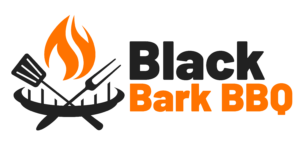A well-cooked brisket is a beautiful thing, but it can be super difficult to get right!
Brisket needs to be cooked low and slow to allow all the connective tissues in the meat to melt and seep into the muscle fibers to create a tender and juicy morsel.

But finding that elusive ideal temperature can be tricky – even a couple of degrees too hot, and you will end up with a dry, tough, and not very pleasant piece of meat.
For some hints and tips to create the perfect brisket, many people turn to the barbecue pros. How do they cook their brisket? Keep reading to find out!
The Basics
The consensus amongst the brisket pros is that you should be smoking at a temperature somewhere between 225 °F and 250 °F (105 °C and 120 °C).
If you are aiming for the ultimate, Texas-style brisket then you want to aim for a smoking temperature around the 225 °F (105 °C) mark. This seems to be what is recommended for competitions and those new to the brisket smoking game.
However, once you have the basics down and understand the process a bit more, nothing is stopping you from experimenting with higher temperatures.
A smoke master can smoke a brisket more quickly at warmer temperatures – anything from 275 °F to 300 °F (135 °C to 150 °C).
225 °F Brisket
For any newbie, 225 °F (105 °C) is a safe smoking temperature.
There are a lot of different techniques that you need to master when smoking a brisket – mopping, wrapping, injecting, brining, bark cultivation, resting, and temperature control will all come with practice — so starting with a safe temperature is always a good idea.
Smoking a good-sized brisket is going to take all night and most of the day to cook, but we think that it is worth it! You should end up with a delicious, juicy, and flavor-packed brisket at the end of the cooking time.
275 °F to 300 °F Brisket
Who has 20 hours to spare to tend to a brisket? You can always raise the smoking temperature a bit to help speed up the cooking process.
That said, you do need to be extra careful every time you increase the cooking temperature – brisket can dry out super quickly!
You will need to compensate with extra mopping to make sure that the brisket stays deliciously juicy. You should also think about leaving a bit more fat on.
The fat will act as a bit of protection from the heat, keeping the meat fibers away from direct heat and will render down to add extra moistness. Making sure that the fat cap is in place is another good idea to protect the meat from direct heat sources.
After Wrapping
If you do want to cook at 225 °F (110 °C) but are worried about drying out your brisket, you could try smoking at 225 °F (110 °C) for a while then wrapping the brisket and increasing the temperature to 275 °F (135 °C).
Wrapping up the brisket will help keep it away from direct heat, but the raised temperature will decrease the cooking time.
The first smoke at 225 °F (110 °C) will let your brisket cook gently and develop the wonderful crust that everyone loves.
This stage of cooking should increase the internal temperature of the brisket to around 150 °F (65 °C). Now you can wrap up the brisket in butcher paper or foil and shift the heat up to 275 °F (135 °C).
The layer of protection will stop moisture from leaving the meat and keep it trapped – you are creating a sauna in a smoker – which will make sure that your brisket stays moist.
What Do The Pros Recommend?
We have collected some best smoked brisket cooking methods from some world-class barbecues. Keep reading to find out their secrets.
Aaron Franklin Smoked Brisket
Follow this guide the next time you want to cook the perfect Aaron Franklin smoked brisket.
First, you need to smoke your brisket at 255 °F (120 °C) for around 3 hours. After 3 hours, increase the temperature to around 260 °F (125 °C).
Mr. Franklin then waits until the brisket has reached the temperature stall, then keeps the temperature somewhere between 280 °F and 285 °F (135 °C and 140 °C).
He then wraps up the brisket and drops the temperature back down to around 275 °F (135 °C).
Now all you need to do is wait for the brisket to get to the right temperature.
Once the internal temperature of the brisket reads above 180 °F (80 °C) and is in the mid-190 °F range (around 90 °C), the collagen will have rendered to create a juicy and tender and delicious brisket.
Malcolm Reed Smoked Brisket
Mr. Reed varies his smoking techniques slightly, depending on which smoker he is working with.
If using a pellet grill, he recommends that you set the temperature to 195 °F (90 °C) until the brisket needs wrapping, then increase the temperature to 250 °F (120 °C) until the brisket is cooked.
If you are using a charcoal smoker, the temperature is also in the 250 °F (120 °C) range. Wood smokers, on the other hand, should be held at a temperature of 275 °F (135 °C).
Harry Soo Smoked Brisket
The master of brisket, Mr. Soo, usually smokes briskets at 250 °F (120 °C) but he does use a whole host of different methods.
His classic Texas smoked brisket is smoked at 200 °F (95 °C) for 6 hours, then smoked at 250 °F (120 °C) until it is cooked.
In a rush? Why not try his famous Backyard Brisket method and cook for 4 hours at 400 °F (200 °C).
Harry Soo’s Backyard Brisket
Need a quick knockout brisket for a weekend get-together? We recommend that you check out this brisket smoking technique from Mr. Harry Soo. It is certainly quicker than a traditional 20 plus hour smoke but does not scrimp on flavor.
Many people are put off by the super quick cooking time, but don’t worry! When done correctly, these types of smoked briskets can be just as delicious as a low and slow job.
That said, you do need to make sure that you have other brisket techniques mastered to make sure that your meat stays delicious.
The first thing to remember when smoking at higher temperatures is that you need as much fat as possible on your meat.
This will add some protection, keeping the fibers away from direct heat, while also melting down to add some extra moisture.
You also need to be aware of your mopping or spritzing. At any temperature over 350 °F (175 °C) you are looking ideally to be mopping or spritzing every 30 minutes.
This will guarantee that the brisket has access to as much moisture as possible while cooking.
The final thing to keep an eye on when you are smoking at high heat is the internal temperature. It will rise quickly and sharply. Being aware of internal temperatures is important if you don’t want to overcook your brisket.
Backyard Brisket: How To
Mr. Soo’s backyard brisket is the perfect dish to serve if you want to impress at a cookout. It is relatively quick but super delicious.
You begin by smoking the brisket for around 3 hours at 400 °F (200 °C). Then you wrap the brisket and bake it in an oven set to 275 °F (135 °C) for the final hour or so.
You need to make sure that you are mopping or spritzing the brisket every 30 minutes while it is in the smoker to make sure that the bark is properly maintained. Once you have a good bark on your meat, you can move it into an oven for the final stages.
If you aren’t sure if your brisket is cooked, Mr. Soo has a neat trick – poke it with a bamboo skewer. This should feel the same as poking a bamboo skewer into a jar of peanut butter.
If you don’t want to use peanut butter you can, of course, rely on the internal temperature readings of your brisket!
What Temperature Is Cooked Brisket?

Your brisket will be at its best when it is cooked to a temperature of 203 °F (95 °C).
You may have noticed that this temperature is a lot higher than what is usually recommended for cooked meats. This is because the brisket cut has a lot of connective tissue that melts at a higher temperature than meat cooks.
At 203 °F (95 °C), all the connective tissue in the brisket will have rendered, so you can be sure that you have smoked a succulent piece of meat.
To give you an idea of the texture you are looking for, well-cooked brisket should feel a bit like butter when you poke it with a skewer.
Because 203 °F (95 °C) is a fairly specific temperature, the best way to tell if your brisket is cooked is with a meat thermometer.
A good quality leave-in thermometer will take out all the guesswork associated with smoked brisket temperature. A good thermometer will also help you more accurately gauge the temperature of your smoking chamber.
When Do You Wrap A Brisket?
Usually, you will need to wrap up your brisket at some point during the cooking process. Mr. Harry Soo’s recipe for Backyard Brisket, for example, wraps the brisket after three hours in the smoker.
This is a fairly typical timescale but is there a specific temperature you are aiming for?
Yes, there is a temperature you are aiming for. You need to let your brisket hit somewhere between 165 °F and 180 °F (75 °C and 80 °C) before you wrap it.
You need to let your brisket sit in the smoke uncovered for a good few hours so that it has time to absorb and soak up that lovely smokey flavor. However, leaving brisket uncovered for the whole cooking time tends to cause the meat to dry out.
To keep your meat flavorful and moist, let it cook until the internal temperature is somewhere between 165 °F and 180 °F (75 °C and 80 °C) which will usually take around three hours, then cover it in two layers of foil.
Doing this is the perfect middle ground between smokey flavor and moistness.
If you do not have a thermometer, you need to rely on some visual clues to suggest it is time for you to wrap up the brisket.
You are aiming for fat that is yellow and soft, and the meat should be a lovely deep mahogany color. Remember that visual clues are not as definitive or accurate as a temperature reading, so investing in a thermometer is a good idea.
If you are wrapping your brisket and then keeping it in the smoker, be prepared for the temperature of the cooking chamber to drop a little.
The temperature can be lowered for as long as 30 minutes after you put the brisket back in so don’t panic!
Controlling The Temperature Of Your Smoker
To smoke perfect brisket, you need to understand how your smoker works. If you are brand new to the wonderful world of smoking, you may want to experiment with a cheaper cut of meat or a whole chicken.
Once you feel like you have mastered smoking cheaper cuts, then move on to something more expensive and difficult like a good size chunk of brisket.
If you want to dive headfirst into smoking brisket and don’t want to fuss with other meats we don’t blame you!
Instead, try some dry runs of your smoker and take a note of how the temperature changes as you use it, and work out how to operate the vents.
Brisket Fat Caps
The top of most cuts of brisket is covered in a layer of fat. This is the fat cap and there is some debate as to how you deal with it. Should the fat cap be facing up, or face down?
The fat cap is usually left on as it will absorb some heat from your smoker, stopping the meat from overcooking and becoming dry.
This is particularly important for the more vulnerable parts of the brisket that would otherwise be inedible after 20 hours in a smoker.
Some barbecue experts recommend that you trim off some fat before you begin smoking. These people say that leaving all the fat on will block off some meat, preventing the smokey flavor from penetrating deep into the muscle fibers.
However, it is probably best to leave the fat alone if you are smoking at a higher temperature for a shorter amount of time.
You may find that there is a slight depletion of smokiness in the brisket when it is done, but the fat will provide an essential buffer from the increased heat of the smoker.
Before you put your brisket in the smoker, have a good look at the anatomy. Briskets are cut with one thicker and more muscled end, and one more narrowed end.
You need to be able to identify which is which and where the fat cap starts and finishes.
Because brisket has ends of different thicknesses, it can be a challenge to cook evenly. You can mitigate the majority of the potential issues you will have by placing the thicker end closest to the heat source with the fat cap face down.
This part of the cut of meat is called the point and, because it is thicker than the opposite end, it should cook more evenly. Having the fat at the bottom will keep the meat away from excessive heat on the floor of the cooking chamber.
Overview Of Brisket Wrapping
As we have already discussed, briskets cook best when left uncovered for around 4 hours and then wrapped in butcher paper or foil to inhibit moisture loss.
When you are ready to wrap, the brisket should be a deep mahogany color with soft and yellow fat. Ready-to-wrap brisket should have an internal temperature of 165 °F to 180 °F (75 °C to 80 °C).
Wrap the brisket in two layers of either foil or butcher’s paper and be aware that the temperature of the smoker will dip a little when you put it back into the chamber.
Good Smoking Briskets
So, now you know how to smoke a brisket like a pro, how do you choose a good smoking brisket. Selecting the best possible piece of meat is surely the foundational step of any good smoking experience!
Remember – understanding different cuts of meat and how they work is essential if you want to become a smoking master.
Good brisket is vital if you want a good smoke. We recommend that you go for a ‘packer’ or whole brisket cut as they offer fantastic value for money.
These cuts are divided into two sections: the point and the flat. The best packer briskets have a thick flat as this will give you a much more even cook.
You also need to have a look at the fat layer on your potential brisket purchase. The ones that smoke best have around an inch of fat for the fat cap, anymore, and you will probably be trimming at home and wasting money.
Marbling is another important factor in deciding what brisket you are going to buy. Marbling is the white flecks or patterns that you can see in raw beef. It is this fat and connective tissue that will take a good brisket to a brilliant one.
Brisket Smoking Accessories
Sometimes you need a couple of little extras to make something truly magical. Smoking brisket is no different! Here is a quick guide to some popular tools that are recommended by the pros.
Brisket Marinade
Competition briskets often have a marinade or a liquid injected into them while they are cooking. This will replace any lost moisture and give an extra zing of flavor when cooking has finished.
The world-class Dave Bouska’s marinade is widely available and particularly delicious.
Meat Injector
How are you going to get all of that delicious liquid into the middle of the brisket? You use a meat injector. Meat injectors quickly take your brisket to another level and guarantee a wonderful flavor with every mouthful.
Opt for a sturdy injector that is made out of stainless steel. These will not get tainted by different marinade flavors and last for years when looked after properly.
Butcher Paper
We have already gone through the basics of brisket wrapping, but you do need to make sure that you are purchasing the right wrapping materials. You can use foil, but many people find that butcher paper works best.
You need to make sure that you are getting the best butcher paper that you can. This will guarantee a good bark on your brisket. Keep an eye out for food grade and un-waxed paper rolls. Check out Aaron Franklin’s favorite here.
Brisket Rub
You can of course make your own rub, but if you don’t have a recipe in mind a pre-mixed rub does the trick! Slap Yo Daddy and Killer Hogs are two of our favorites and will give your brisket a definite zing.
Meat Thermometer
We have already stressed the importance of a good meat thermometer. In the unlikely event that you aren’t convinced, let’s try again!
A good meat thermometer takes all the guesswork and uncertainty out of smoking and allows you to smoke the best brisket that you can.
There are a huge range of thermometers available on the market today, each promising different luxuries.
If you enjoy being precise in your smoking, you can get a dual-prong probe thermometer. One of these will allow you to read the temperature of the cooking chamber of your smoker, as well as the internal temperature of your brisket.
Thermometers Misc.
If you are serious about the smoking game, any pro will tell you to invest in a second thermometer. Ideally, this one will be an instant-read display.
You will find that you need to quickly get the temperature of different parts of your brisket towards the end of the cooking process to make sure that all the brisket is cooked.
Final Thoughts
Smoking brisket is a serious game!
We have put together some of the best hints, tips, and instructions from world-class smoking professionals to help you get the most out of your next brisket smoke.
The key thing to remember is that low and slow will always give you the best results. But no one has 20 hours to spare!
To make brisket smoking more accessible to everyone at home, you can always increase the temperature of your smoker.
While increasing the smoker temperature does decrease cooking time, you need to make sure that you are replacing any lost moisture regularly.
Mopping or injecting every 30 minutes should be enough to guarantee you a juicy and succulent brisket after it’s finished cooking.
Happy smoking!
- Porterhouse Vs. Ribeye - May 16, 2022
- How Long To Smoke A Brisket Per Pound – Explained - May 16, 2022
- What Is A Tomahawk Steak? - May 16, 2022








